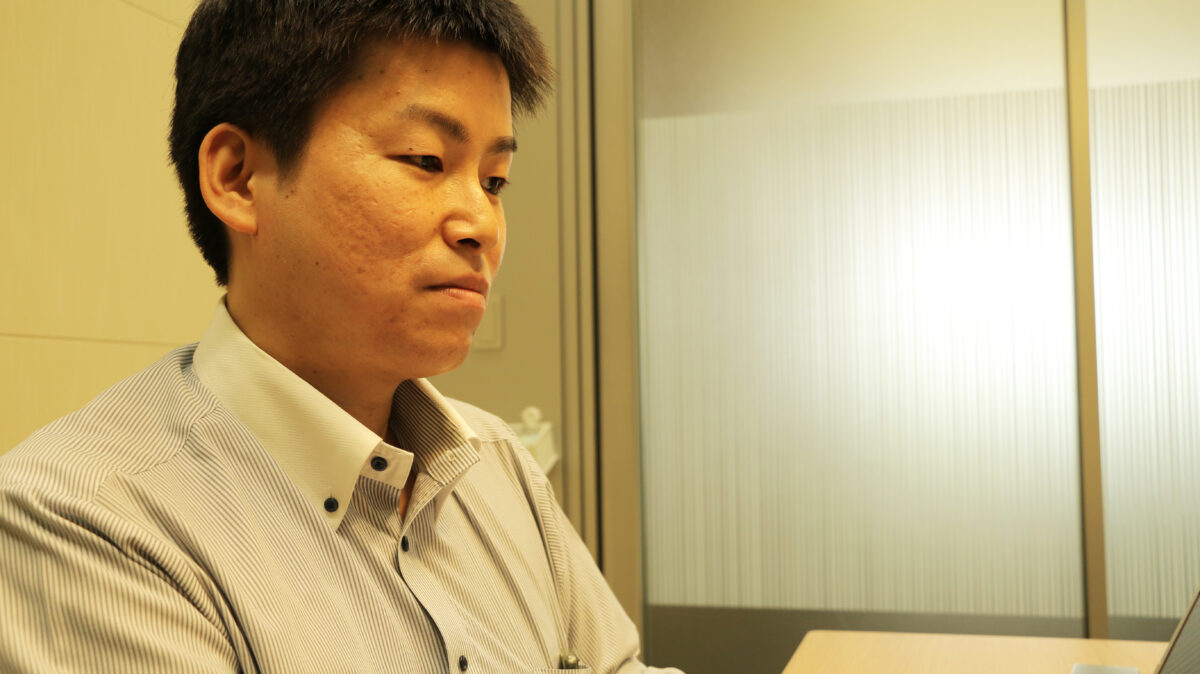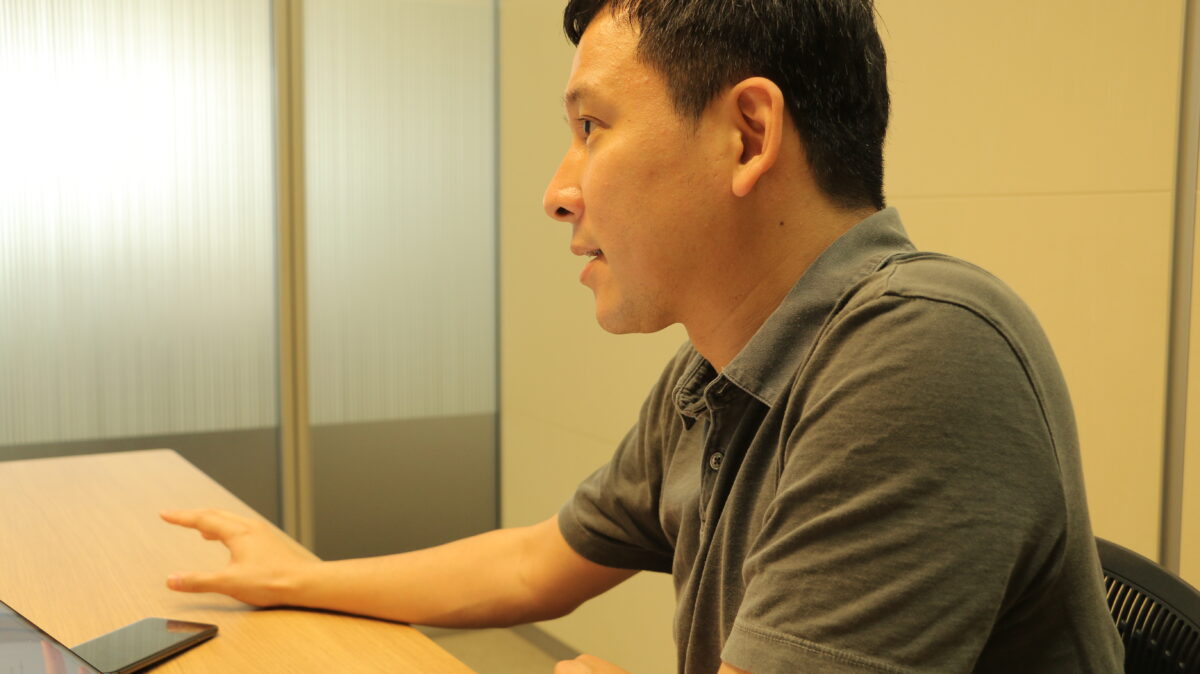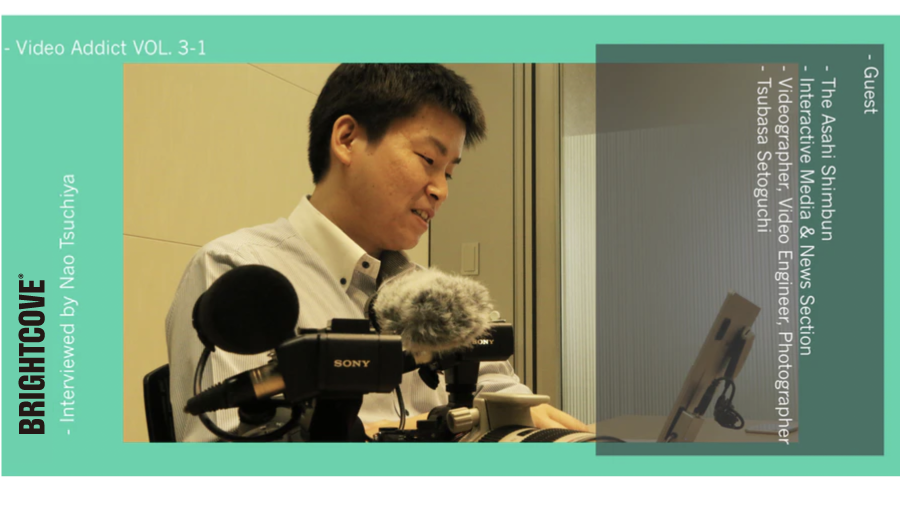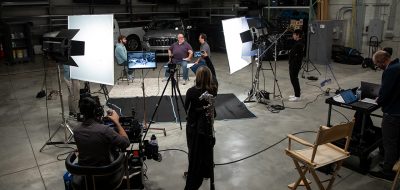After VOL.1 and VOL.2, which were about TV stations, the third installment of Video Addict will be about Asahi Shimbun, one of Japan’s leading newspaper companies. According to the Japan Newspaper Publishers and Editors Association, the number of newspapers published in Japan has been decreasing for 14 consecutive years. In this situation, Asahi Shimbun has been quick to tackle digital transformation, with the supreme mission of ‘fusing paper and digital’. In this installment, we will hear from Mr. Setoguchi of Asahi Shimbun about how the company uses video.
Tsubasa Setoguchi
Asahi Shimbun Digital Media Department Multimedia Group Manager
Joined the company in 2008 as a radio equipment engineer in the Aviation Department, which is responsible for aircraft operations. Moved to the current department in 2012 after being involved in aerial filming as part of his duties. Responsible for the production of video content, including photos, videos, VR, and live video content. Involved in the production of video portal pages, planning of video distribution flows, maintenance, and improvements.
## We can convey facts to users with a sense of reality
**Brightcove (BC) Tsuchiya**: I think you usually do the interviewing, but this time we’ll be the ones doing the interviewing (laughs). Could you give us a brief overview of your career?
**Asahi Shimbun (AS) Mr. Setoguchi**: Yes, I’m nervous because I’m the one being interviewed (laughs). I joined Asahi Shimbun in 2008 and was assigned to the Aviation Department, which is in charge of aerial photography, as an engineer. Since 2012, I have been in my current position (Multimedia Group, Digital Editorial Department, Cap) and as a photographer, I plan, research, edit and create web visual content such as photos, videos, VR and live broadcasts. I am also involved in the renewal of video pages, and in the planning and maintenance of various services that use the videos sent to us from the advertising department.

**BC Tsuchiya** How many people are there in the digital editorial department who work on video?
**AS Setoguchi** I’d say there are a few people in the digital editorial department. However, there are also many people working on video in other departments, although they are in different departments.
**BC Tsuchiya** When did it become possible to distribute video relatively freely on the media owned by the Asahi Shimbun?
**AS Setoguchi** We started experimenting with this around 2001, and by the time Asahi Shimbun Digital was launched around 11 years ago, we had a system in place that allowed us to distribute videos on a daily basis.
**BC Tsuchiya** What was the feeling at the time for newspaper companies when video was added to the mix of text and photos?
**AS Setoguchi** Firstly, as a company that practices journalism, we felt that we had gained a new means of expression in the form of video. The addition of video allows us to convey facts to users with a sense of reality. Secondly, we felt that we had gained new business potential. We have high hopes that we will be able to maximize the value of the content produced by our reporters stationed throughout Japan and around the world, as well as advertising revenue. In fact, there are initiatives within our group company ANN (All Nippon News Network) to mutually utilize content, and video is also an essential part of this.
## What kind of video can only be produced by a newspaper company?
**BC Tsuchiya** I think there are still many traditional print media and companies that are resistant to the new video format, but I have a strong image of Asahi Shimbun being a pioneer in the industry when it comes to video. Is there a reason for this?
**AS Setoguchi**: There is an atmosphere in the company that says “it’s good to try new things”. We think it’s good to try new and interesting things that we haven’t tackled before.
I think it’s probably been like that since the old days, when we established our aviation department in 1926, but I think it’s a company culture that actively tries new and interesting things. There are a lot of people in the newsroom who are fickle, and I think a lot of people make decisions on a whim at the last minute.
As video becomes more and more common, from 4G to 5G, there was no option for us not to work on video. The company’s policy is to ‘fuse paper and digital’. Video is one of the central elements of digital transformation. We are thinking about what kind of video we can create as a newspaper company, and we are exploring this while putting it into practice.
In addition, the Asahi Shimbun also hosts a number of real-life events, such as high school baseball tournaments, shogi and go tournaments, and the All Japan Band Competition. Video is also effective for maximizing the value of these events. For example, by implementing live streaming, it is possible to monetize the event while also making users happy.
## How can we use video on digital platforms to be effective?
**BC Tsuchiya** How are decisions made about planning and proposing projects that use video at the Asahi Shimbun?
**AS Setoguchi** We plan and propose projects in a bottom-up style. For example, if we are planning to conduct some kind of interview or event, we propose how to make effective use of video on the digital platform. We make a point of carefully explaining to all the relevant departments, not just our own, what the benefits of using video are.

**BC Tsuchiya** I watched Asada Mao’s last dance in real time at the time, and I was really moved. I thought it was a form of premium digital content for the next generation. I was also honestly surprised that the Asahi Shimbun had a production and operations team that could release content of this level just 24 hours after the performance. I heard that this content was inspired by a long-form feature article in the New York Times in 2012 called “Snow Fall” (which won a Pulitzer Prize that year for its use of multimedia on the web). Is this kind of project also bottom-up?
**AS Setoguchi** Yes, but the reporters in charge basically put all their energy into making the paper better. They often don’t have time to get involved in creating rich digital content. That’s where the planning director from our department comes in. For example, there is a sports director who notices that “if it’s Mao Asada, we can do this kind of digital development…” and gathers the staff around him to plan the project. Also, we have a creative team nearby, which includes web designers and engineers such as programmers, so we can collaborate with them immediately. I think the content was created through collaboration between journalists and engineers.
**BC Tsuchiya**: It’s a strength of the Asahi Shimbun that you have such resources within the company.
**AS Setoguchi**: That’s right. But in my personal opinion, until now I thought our rivals were other newspapers, but I think that’s not the case anymore, and that our rivals now include TV stations, online media, and even freelancers.
That concludes Part 1. In Part 2 (https://www.brightcove.com/ja/resources/blog/video-addict-vol3-asahi-shinbun-2), Mr. Setoguchi will talk about the skillset needed to tackle new projects at a newspaper company, and his outlook for the future.




